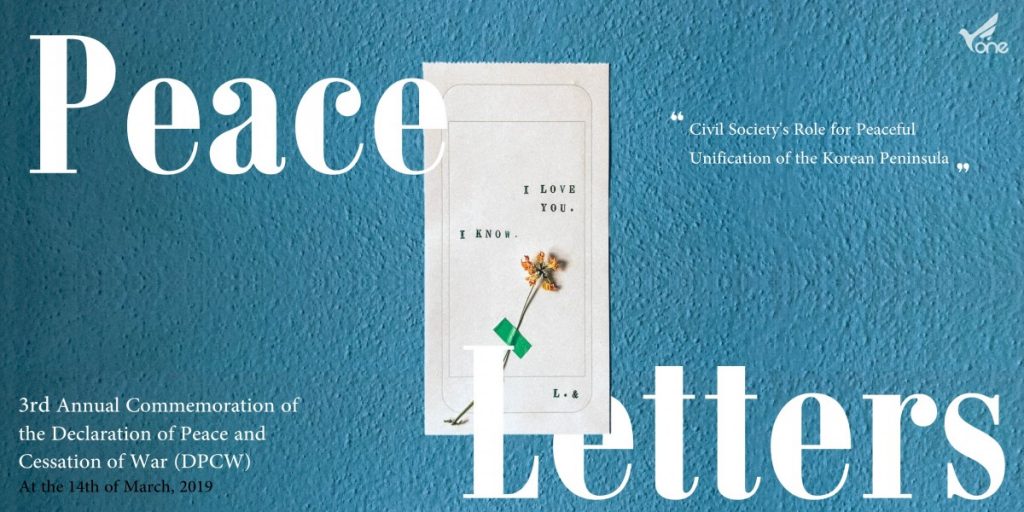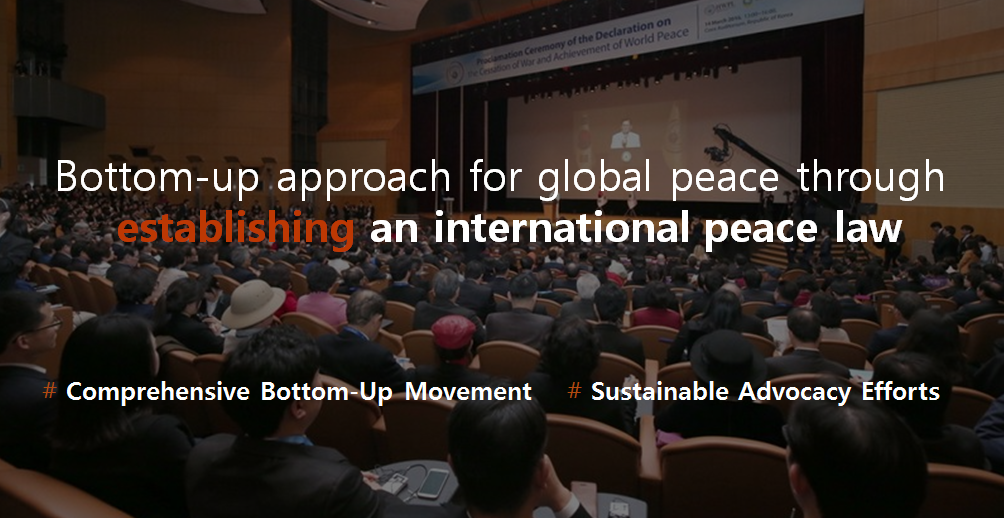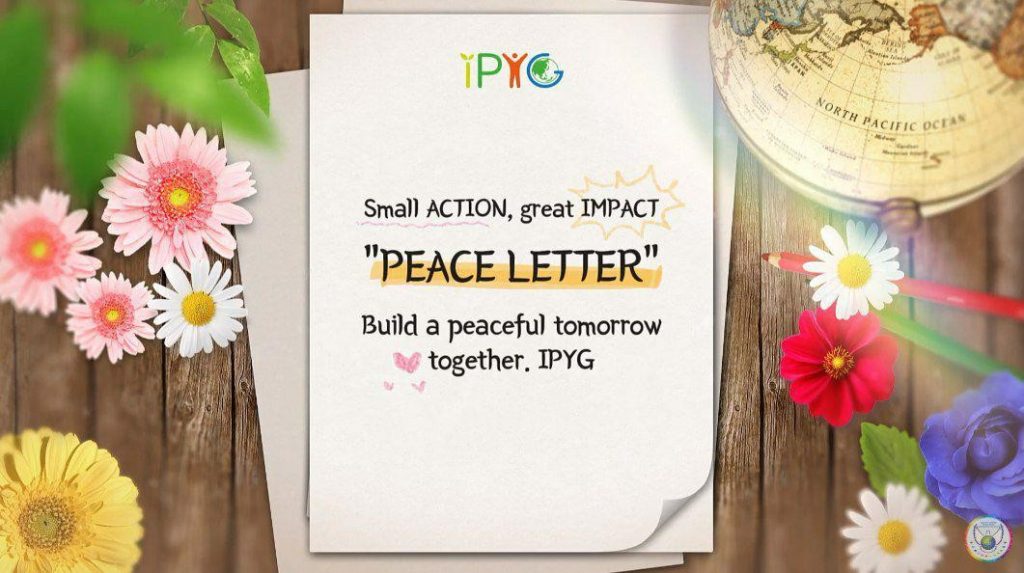
On 6th of June, 2018, the UN Security Council unanimously adopted the resolution 2419 (2018) to call on increasing the representation of young people. The resolution was crafted to recognize the role youth could play in conflict prevention and resolutions while “advancing sustainable peace” and “spreading a culture of peace.”
Now, what should young people do?
Reference: http://hwpl.kr/en/news/view/180806322//PeaceLetterstobeDeliveredtotheTwoHeadsofStates
IPYG Peace Letters initiative

In order to develop the Declaration of Peace and Cessation of War (DPCW) into a legally binding form, it is essential to raise awareness and mobilize support from heads of states and nations. To that end, the International Peace Youth Group (IPYG) has been urging the heads of state and government officials for their support by delivering Peace Letters written and gathered through youth and civil organizations.
Youth, holding a pen instead of weapon
Youth of 23 countries have participated and the handwritten peace letters have been delivered to 9 former/current presidents and prime ministers in 8 countries.
In particular, as Korea still remains the only divided nation in the world, Korean youth have been writing to mayors, lawmakers, prime ministers and the president of Korea with a hope that the DPCW will realize peaceful reunification on the Korean Peninsula. About 165,782 letters have been collected so far (as of Feb 2019)
Why is DPCW the Answer to Peace?

What is the difference between existing international law? The biggest problem with international law at present is that it is not legally binding. Therefore, DPCW includes the direction of legally binding and legal force.
The existing international law contains elements in which a powerful nation can create disputes along its interests. According to Article 1 “Prohibition of the threat or use of force” and Article 3 “Friendly relations and the prohibition of acts of aggression”, States should abstain from interference in other States, whatever its motives or purposes. And States should condemn the illegal occupation of territory and should criminalize in their domestic law.
10 Articles of the DPCW consisted of “Conflict prevention (Article 1~5) “, “Conflict mediation (Article 6~7)” and “Securing sustainable peace (Article 8~10).” Conflict prevention encourages states to cooperate in gradual disarmament, repurpose weapon-manufacturing facilities for the benefit of humanity. And don’t invade. When there are interstate problems, the state itself decides its own fate.
How can do the DPCW mediate Conflict? Through the UN Security Council, the International Court of Justice, other judicial bodies, regional judicial arrangements, the DPCW will settle disputes. Then you may be able to ask this question. “How can international peace be maintained through the UN Security Council when the UN Security Council is now composed primarily of powerful nations?” But the DPCW involves changing international organizations like the United Nations Security Council to function properly.
Lastly, Securing sustainable peace is important for future generations. Religion is the most important part of people’s ideology. In other words, this is a factor that can cause conflict among people. In fact, it accounts for 80 percent of the causes of war. Therefore, religion should be united, and religious leaders should take the lead in the peace movement. And through peace education for young children, it creates an eternal culture of peace.
Reference: http://hwpl.kr/en/initiative/lawForPeace
How can peace be achieved with DPCW?

The answer is “Civil Society!” That’s why HWPL works with IPYG and IWPG. Peace comes when all citizens around the world are watching. The President cannot ignore the people. The owner of the state is the people, and the president is not at his disposal because the people vote. When citizens around the world shout in one voice, in one direction, nothing can ever ignore it. A national leader can’t help but keep up with the citizens.
The HWPL is where 1.8 billion Youth and 3.7 billion Women gathered to achieve peace. So, in order to achieve the ultimate goal of implementing a legally binding international instrument based on the DPCW, HWPL is encouraging states for the submission and adoption of the document at the UN General Assembly. It must get votes in favor at least two-thirds of the 193 ambassadors of the United Nations member states.
Already, UN permanent representatives of 145 countries recognize the need for the DPCW. In 2017, the central american parliament passed a resolution in support of the DPCW. In Africa, HWPL and the Pan-African Parliament (PAP) signed MOU to support the DPCW. The PAP is the legislative body of the African Union consisting of 55 countries of the continent of Africa. This means the support of the entire continent of Africa.
In Europe, the International Centre for Black Sea-Baltic Studies and Consensus Practices (Centre BBS), which is headed by a group of former European national leaders, signed the MOU with HWPL. Not at all, Seychelles, Eswatini, and Comoros expressed support for the DPCW at the NATIONAL LEVEL.
Reference: http://hwpl.kr/en/news/lists/24
3rd Annual Commemoration of the Declaration of Peace and Cessation of War (DPCW)
Civil Society’s Role for Peaceful Unification of the Korean Peninsula
At 14th of March, 2019, It will be held all over the world. On 14th of March, Everyone in the world should write Peace Letters to support the DPCW. “Dear President, Here is the Answer to Peace. Why not? Do you want war? If you really love your country and people, you should support the DPCW.” What is your choice? Endless War or Peaceful Future? This choice now we do will be remembered forever in future generations. Sign the DPCW!
Mr. President, did you receive our peace letters? Please write back. This is a time of peace. All things have helped us. So, our beginning is a success.